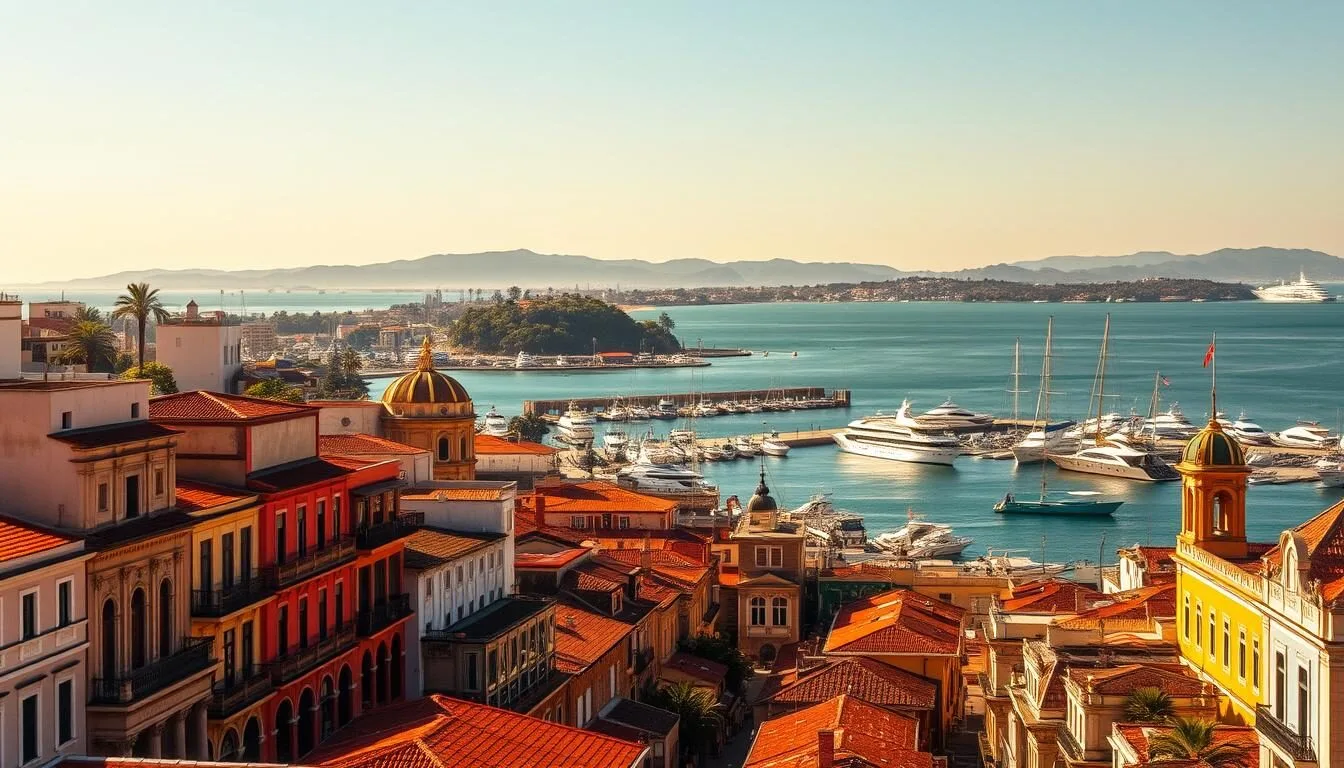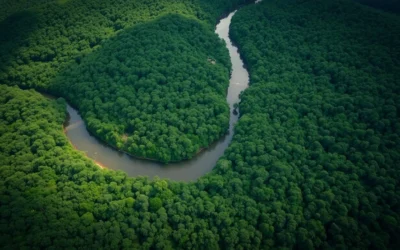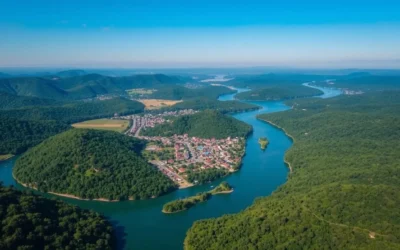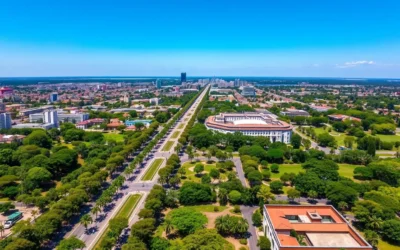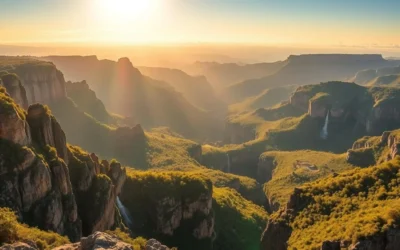✓ Accommodations✓ Flights✓ Rental Cars
São Luís, the capital of Maranhão state in northeastern Brazil, is a treasure trove of cultural heritage and natural beauty. As a UNESCO World Heritage Site, this city boasts an array of colonial landmarks, rich cultural traditions, and a lively atmosphere that will captivate any visitor.
You can wander through the cobblestone streets of the historic center, admiring the colorful colonial houses, or immerse yourself in the local culture at the Mercado Central (Central Market). With its unique blend of old-world charm and modern energy, São Luís is an ideal destination for travelers seeking an authentic experience.
Explore the city’s must-see attractions, from its well-preserved colonial architecture to the stunning natural landscapes nearby, and discover why São Luís is considered one of Brazil’s most fascinating destinations.
Discovering the Charm of Grande Sao Luis
The city of São Luís, with its rich history and cultural heritage, is a treasure trove of experiences waiting to be discovered. As you wander through its historic streets, you’ll uncover the unique blend of Portuguese, African, and indigenous influences that have shaped this vibrant city.
A UNESCO World Heritage Site
São Luís was declared a UNESCO World Heritage Site in 1997, recognizing its cultural and historical significance. The city’s historic center is a testament to its rich past, with colorful buildings and cobblestone streets.
Brief History of São Luís
Founded in 1612 by the French, São Luís has a complex history. The city has been influenced by various cultures, including the Portuguese and Africans, who have left their mark on the city’s architecture, cuisine, and traditions.
Exploring the Historic Center of São Luís

As you step into the historic center of São Luís, you’ll be transported to a bygone era. The historic center is known for its well-preserved Portuguese colonial architecture, featuring charming cobblestone streets and colorful colonial mansions. Walking through this historic center, you’ll see impressive churches and ornate facades that tell the story of the city’s rich past.
Colonial Architecture and Tiled Facades
The architecture of São Luís’s historic center is characterized by the use of ceramic tiles, known as azulejos, which adorn many building facades. These decorative elements served both aesthetic and practical purposes by reflecting sunlight and keeping interiors cool. You’ll notice the intricate details and ornate facades that take you back in time, showcasing the city’s rich cultural heritage.
The technique of covering facades with ceramic tiles not only had an aesthetic function but also helped to minimize internal heat. There are about 150 different models of Portuguese tiles, most of them in blue and white, adding to the historic center’s unique charm.
Cobblestone Streets and Historic Landmarks
As you wander through the cobblestone streets of São Luís’s historic center, you’ll be surrounded by over 3,000 colonial buildings that create an open-air museum of Portuguese architecture. The most picturesque streets, like Rua Portugal and Rua do Giz, offer the best-preserved examples of colonial architecture. You’ll discover the unique architectural features of São Luís’s colonial mansions, including their large windows, doors, and iron balconies that reflect the economic prosperity brought by the cotton industry in the 18th century.
The ongoing restoration efforts in the historic center, including the government’s Reviver project, have helped preserve this architectural treasure for future generations. You’ll gain insight into colonial life by learning how merchants typically used the first floor of these buildings for their businesses while living with their families on the upper floors.
Must-Visit Museums in São Luís
The city of São Luís is a treasure trove of history, culture, and art, with numerous museums that showcase its rich heritage. From the Museu Histórico e Artístico do Maranhão to the Casa de Nhozinho, there’s no shortage of fascinating museums to explore.
Museu Histórico e Artístico do Maranhão
The Museu Histórico e Artístico do Maranhão is a must-visit attraction that offers a glimpse into the region’s rich history and cultural heritage. With a vast collection of historical documents, photographs, and artifacts, this museum tells the story of Maranhão’s development.
Visitors can explore the museum’s exhibits, which provide a deeper understanding of the region’s colonial past, its cultural traditions, and the impact of slavery on the local community.
Casa de Nhozinho and Casa do Maranhão
In addition to the Museu Histórico e Artístico do Maranhão, São Luís is also home to the Casa de Nhozinho, a museum showcasing the traditional way of life in the region. The Casa de Nhozinho is a three-story museum that features a collection of artifacts and exhibits that highlight the daily lives of the people who lived in Maranhão.
The Casa do Maranhão is another must-visit museum, housing exhibits on the state’s cultural heritage, including the bumba-meu-boi festival.
Iconic Churches and Religious Sites
São Luís is a city with a rich cultural heritage, and its historic churches are a testament to its fascinating past. The city’s architecture is a blend of different styles, reflecting the various influences it has been exposed to over the centuries.
Cathedral of Sé
The Cathedral of Sé is a prime example of Baroque architecture in Brazil. Built in the 17th century, it features intricate stone carvings and ornate details that showcase the craftsmanship of the era. Visitors can admire the cathedral’s grandeur and historical significance.
Other Notable Churches
Other notable churches in São Luís include the Igreja do Desterro, rebuilt in 1893, and the Igreja do Carmo, known for its striking façade. These churches not only reflect the city’s religious heritage but also its cultural and architectural diversity.
Palaces and Government Buildings
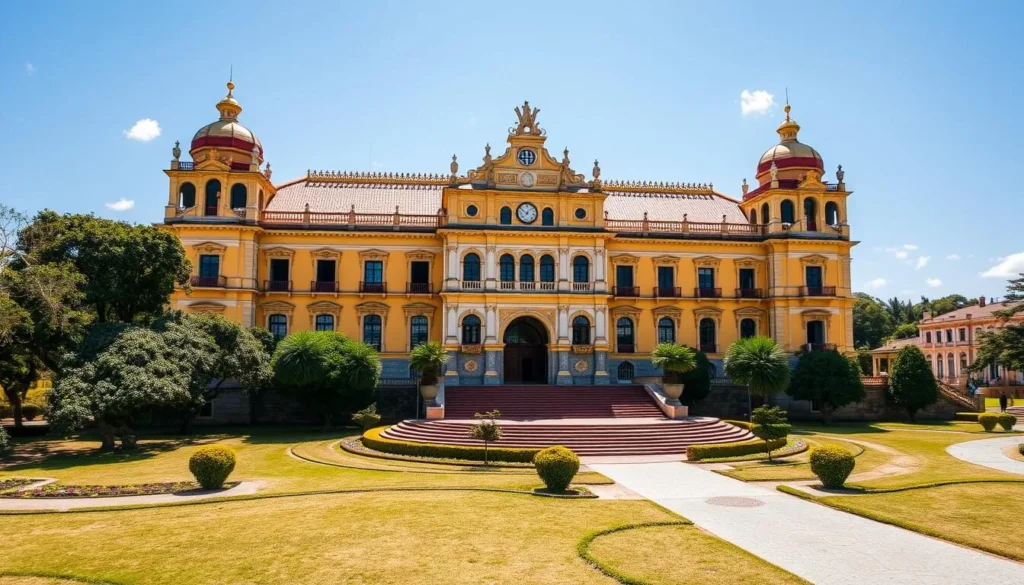
You’ll be fascinated by the palaces and government buildings in São Luís, each with its own unique story. The city’s historic center is home to some of Brazil’s most impressive architectural landmarks.
Palácio dos Leões
The Palácio dos Leões, the seat of Maranhão’s government, is one of the country’s most impressive monuments. With its neoclassical architecture, the palace attracts visitors from around the world. Spanning 3,000 square meters, it’s divided into three wings: residential, administrative, and visitor areas.
The palace houses a collection of 1,300 objects, accessible to the public in five magnificent halls with permanent exhibitions. These objects, dating from the 15th to 20th centuries, include furniture, paintings, porcelain, and sculptures, reflecting the wealth of the 17th century.
Palais de La Ravardière
The Palais de La Ravardière serves as the City Hall of São Luís do Maranhão, Brazil. This 17th-century building is a significant landmark in the city’s historic center, known for its symmetrical façade and decorative stucco pediment. The windows on the first floor have curved lintels, while those on the second floor have straight lintels with stucco decoration and balconies.
Named in honor of Daniel de la Touche, Lord of La Ravardière, who founded the city in 1612, the palace stands as a symbol of São Luís’s colonial past and its transition through different ruling powers.
Both Palácio dos Leões and Palais de La Ravardière are not only significant administrative buildings but also serve as testaments to the rich history and architecture of São Luís, making the city a fascinating place to explore.
Cultural Centers and Art Spaces
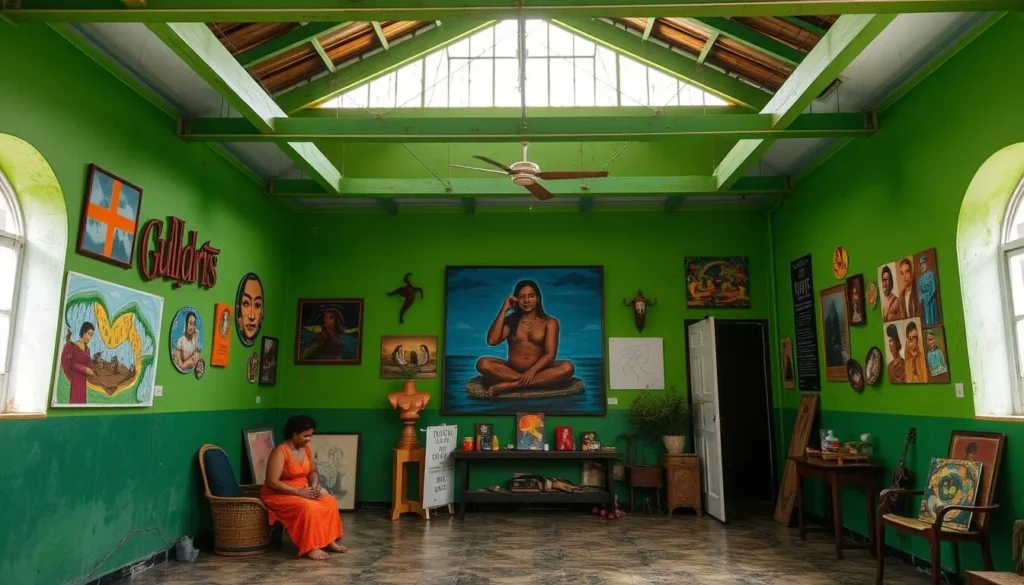
As you explore São Luís, you’ll discover a vibrant cultural scene, with numerous centers and spaces that showcase local art. The city is home to a variety of cultural centers and art spaces that are sure to captivate any visitor.
Reviver Sculpture Park
The Reviver Sculpture Park is a unique place where art meets nature. Visitors can walk through the park and see a variety of sculptures and installations that showcase the artistic talent of the region. The park’s open-air setting creates a unique environment where artworks blend harmoniously with nature.
Odylo Costa Filho Creativity Centre
The Odylo Costa Filho Creativity Centre is a vibrant cultural space that offers a range of activities, including European film screenings, theater classes, and art workshops. This center is a hub for creative expression in São Luís, providing opportunities for visitors to engage with local culture in meaningful ways.
These cultural centers contribute significantly to São Luís’s reputation as a city that values and nurtures artistic expression. By visiting these spaces, you’ll not only get to experience the local art scene but also see artists at work, creating new pieces or modifying existing ones.
Local Markets and Culinary Delights
The city of São Luís is a melting pot of cultures, and its cuisine is a reflection of this heritage. The local markets, particularly the Mercado Central, offer a sensory experience, showcasing the city’s gastronomic delights. Visitors can immerse themselves in the local culture by exploring the Mercado Central, where they can sample regional specialties like tapioca and fresh seafood.
Discovering Mercado Central and Casa das Tulhas
At the heart of São Luís is the Mercado Central, a vibrant hub where visitors can experience the local culture. The Mercado Central is a place where you can find an array of regional specialties. Right next to it, the Casa das Tulhas offers a chance to taste and buy traditional products. As you wander through the stalls, you’ll be surrounded by the sights, sounds, and aromas of São Luís’s culinary scene.
Savoring Traditional Maranhão Cuisine
The cuisine in São Luís is a blend of indigenous, African, and Portuguese influences. Be sure to try some local specialties likeCarne de Sol, a traditional sun-dried meat dish often served with rice and beans. Other must-try dishes includeTorta de CamarãoandArroz de Cuxá. These dishes showcase the rich culinary heritage of Maranhão.
Historic Fountains and Legends
As you wander through the historic center of São Luís, you’ll stumble upon two fascinating fountains that are steeped in history and legend. These fountains are not just remnants of the past; they’re living testaments to the city’s rich cultural heritage.
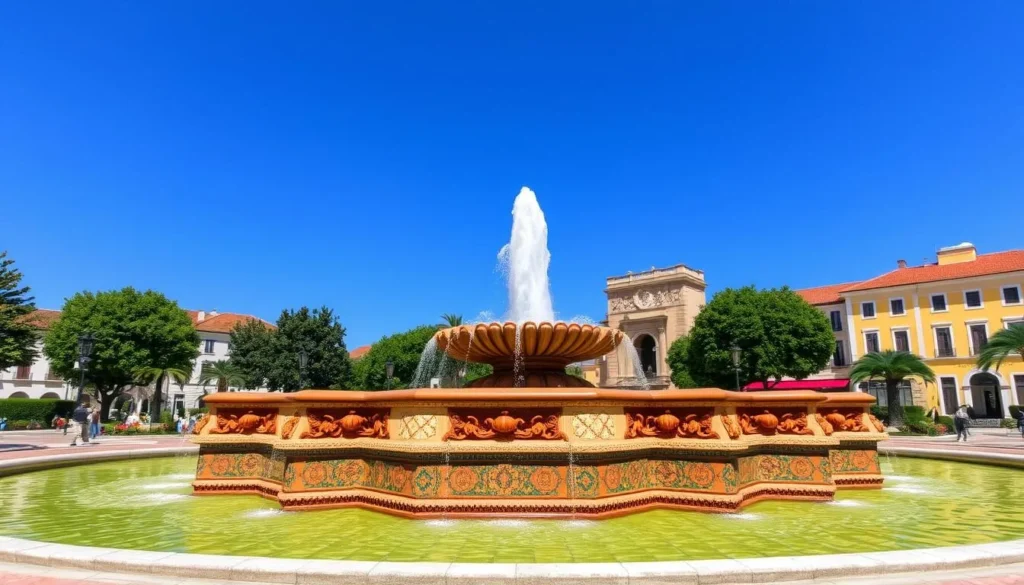
Ribeirão Fountain and Its Myths
The Ribeirão Fountain, built in 1796, is a masterpiece with five spouts of water emerging from sculpted mouths and figures representing fish and gods. It’s set in a courtyard lined with impressive stonework, making it a must-visit landmark. According to legend, a giant serpent sleeps beneath the fountain’s underground tunnels, which will supposedly awaken and swallow the city when its head meets its tail.
The Ribeirão Fountain’s water comes from a spring that used to supply many houses in the center and the ships that docked in São Luís. The myths surrounding this fountain were actually encouraged by the city’s elite to keep people away from the secret underground tunnels.
Pedras Fountain
The Pedras Fountain, inaugurated in 1640, is even older and has imposing stone fountains from which water gushes. It was used by the Portuguese troops during their fight against the French, highlighting its historical significance. Although it’s not as well-preserved as the Ribeirão Fountain, it remains a cultural landmark that connects visitors to São Luís’s colonial past.
Both fountains represent more than just practical infrastructure; they’re cultural landmarks that connect modern visitors to the city’s history and folkloric traditions. As you explore São Luís, you’ll find that these fountains are an integral part of the city’s story and identity.
Grande Sao Luis, Brazil: Best Things to Do – Top Picks
São Luís is a city steeped in history and culture, offering a unique blend of colonial architecture, vibrant markets, and breathtaking natural beauty. Visitors can explore the city’s rich heritage by visiting its top attractions and discovering its hidden gems.
Top 5 Must-See Attractions
The top attractions include the Historic Center, Lençóis Maranhenses National Park, and other cultural wonders.
- Historic Center: Explore cobblestone streets and colonial architecture.
- Lençóis Maranhenses National Park: Witness unique sand dunes and freshwater lagoons.
- Mercado Central: Experience local culture and cuisine.
- Cathedral of Sé: Admire beautiful architecture and historical significance.
- Reviver Sculpture Park: Discover contemporary art.
Day Trip to Alcântara
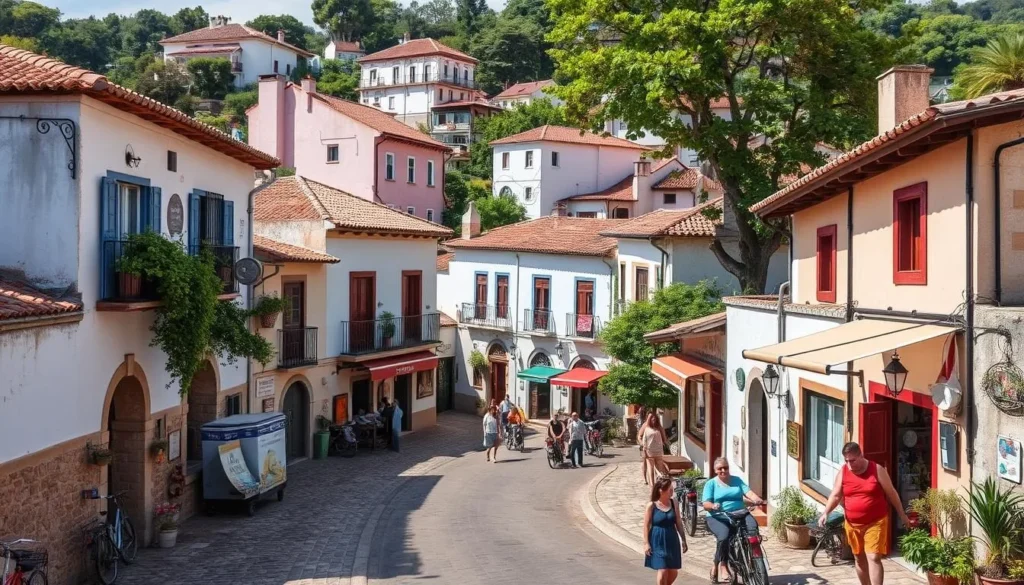
Just across the bay from São Luís lies Alcântara, a treasure trove of colonial architecture and history waiting to be explored. This charming town is a perfect destination for a day trip, offering a unique glimpse into the rich history and heritage of Maranhão.
Colonial Heritage of Alcântara
Alcântara is renowned for its well-preserved colonial buildings, historic churches, and museums. As you walk through the streets, you’ll feel like you’ve stepped back in time. The town’s architecture tells the story of its prosperous past, reflecting the influence of Portuguese colonial rule. Visitors can explore the ruins of São Matias Church, the historic main square (Praça da Matriz), and the Museu Casa Histórica de Alcântara, each offering a glimpse into the town’s rich cultural heritage.
How to Get There and What to See
To get to Alcântara, you typically take a boat from São Luís. The journey across the bay offers scenic views and a chance to relax before arriving at your destination. Upon arrival, you can join a guided tour to explore the town’s landmarks and learn about its history. The trip to Alcântara is not just about seeing historic sites; it’s also about experiencing the local culture, including the Festa do Divino, an important religious festival celebrated with enthusiasm in the town.
By visiting Alcântara, you’ll gain a deeper appreciation for Maranhão’s cultural roots and the significance of preserving historical sites. Whether you’re interested in history, architecture, or cultural experiences, Alcântara is a must-visit destination on your trip to São Luís.
Adventure in Lençóis Maranhenses National Park

Imagine walking through vast sand dunes and swimming in crystal-clear freshwater lagoons – welcome to Lençóis Maranhenses. This unique national park, covering 1,500 square kilometers, is a must-visit destination for any adventure enthusiast traveling to São Luís.
Sand Dunes and Freshwater Lagoons
The park is characterized by its vast white sand dunes punctuated by crystal-clear freshwater lagoons. As you hike through the dunes, you’ll be treated to stunning views of the lagoons, which are perfect for swimming. The lagoons, such as Lagoa Azul, Lagoa Bonita, and Lagoa das Sete Mulheres, offer a refreshing dip in their clear waters.
Best Time to Visit and Tour Options
The best time to visit Lençóis Maranhenses is from July to December when the lagoons are fullest and most accessible. Visitors can explore the park through various tour options, including hiking and exhilarating buggy tours that allow you to cover more ground and enjoy the breathtaking views. Whether you’re looking for adventure activities or a relaxing trip, Lençóis Maranhenses has something for everyone.
To make the most of your visit, remember to wear appropriate footwear for walking on sand, bring plenty of water and sun protection, and plan your trip to catch the stunning sunset over the dunes. With its unique ecosystem and breathtaking landscapes, Lençóis Maranhenses National Park is a place that will leave a lasting impression on all visitors.
Boat Tours on the Parnaíba River Delta
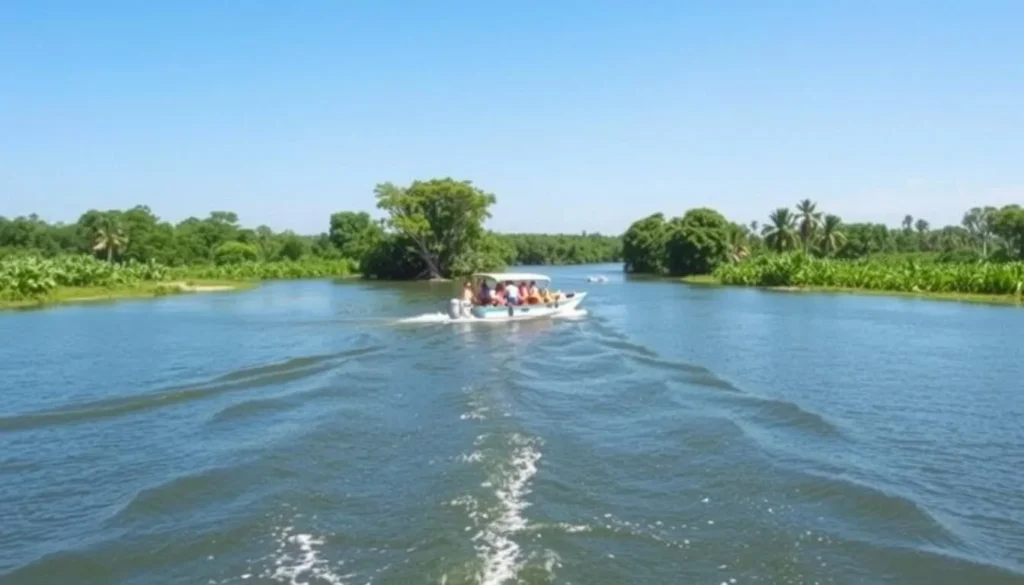
The Parnaíba River Delta is a breathtaking natural wonder that invites you to explore its diverse ecosystems. Located in northeastern Brazil, this stunning destination is easily accessible as a day trip from São Luís.
Wildlife and Natural Beauty
The Parnaíba River Delta is teeming with wildlife, including playful monkeys, imposing alligators, and rare bird species like the Spix’s Macaw and Jabiru stork. As you navigate the river, you’ll have the opportunity to see these animals up close in their natural habitat. The delta’s waters are home to a variety of mangrove plants, which play a crucial role in supporting the diverse wildlife that calls this area home.
Tour Experiences and Recommendations
Boat tours on the Parnaíba River Delta offer a range of experiences, from half-day excursions to multi-day adventures. You can expect to stop at small islands, swim in the delta’s waters, and interact with local communities living in the area. To make the most of your trip, choose a reputable tour operator that offers guided tours and follows sustainable tourism practices.
When planning your tour, consider your interests and preferences. Whether you’re a wildlife enthusiast, photographer, or simply seeking a peaceful nature experience, there’s a tour option available to suit your needs. Be sure to bring necessary items such as sunscreen, insect repellent, and a camera to capture the stunning scenery and wildlife.
Beaches and Coastal Areas
Beyond the historic center, São Luís boasts beautiful beaches and coastal areas worth visiting. You can escape the city’s hustle and bustle by heading to these nearby spots, which offer a more relaxed atmosphere and a chance to enjoy the natural beauty of the region.
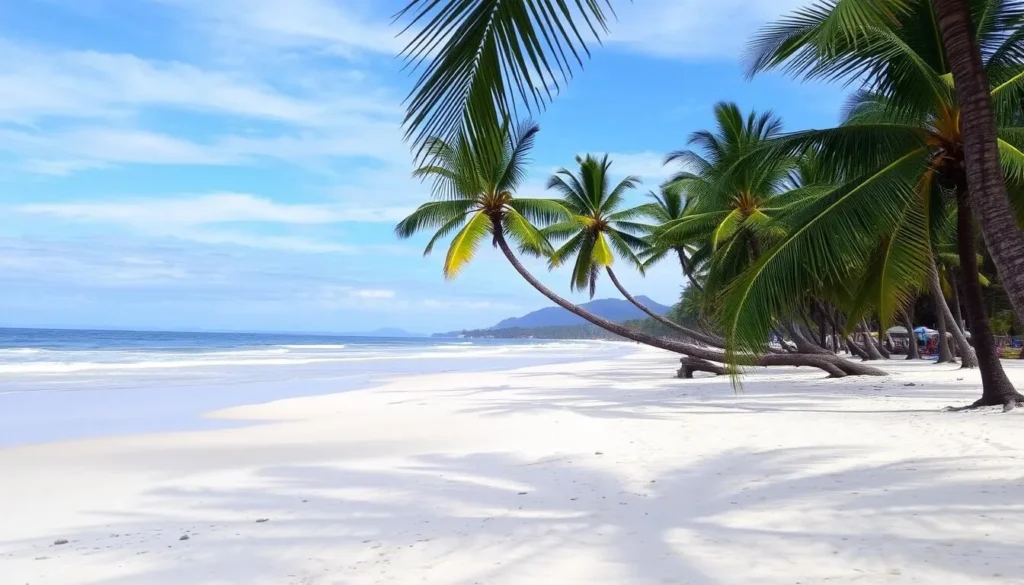
Lagoa da Jansen
Lagoa da Jansen is a peaceful oasis in the heart of São Luís, offering a serene escape from the city’s chaos. The calm waters of the lagoon mirror the lush greenery surrounding it, creating a perfect spot for relaxation. You can take a leisurely walk along the walking paths, observe local wildlife, or try birdwatching and photography for a more immersive experience.
São José de Ribamar
For a day trip, consider visiting the charming town of São José de Ribamar, easily accessible by public transport from São Luís. This town offers a more countryside vibe and beaches that are considered nicer than those in the city center. You can enjoy the local way of life, visit the beautiful blue Church of São José de Ribamar, and experience the region’s culture firsthand.
The contrast between the urban beaches of São Luís, with their darker waters, and the more appealing coastal areas just a short journey away is notable. By visiting these coastal areas, you can gain a more rounded understanding of the region’s culture and environment, experiencing the local way of life outside the main city.
Nightlife and Music Scene in São Luís
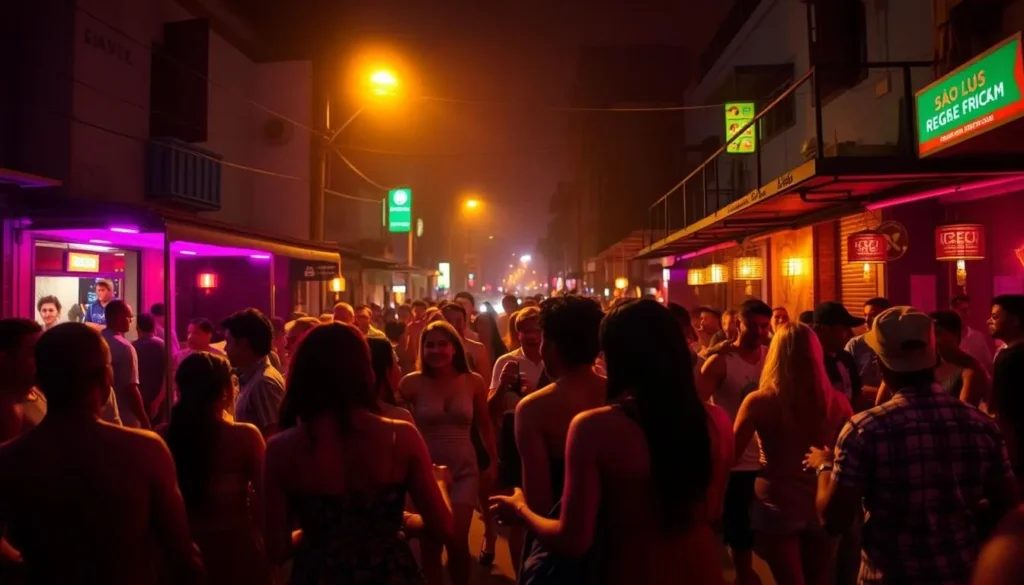
Night falls, and São Luís awakens, showcasing its deep love for music and dance. The city’s vibrant nightlife is a reflection of its rich cultural heritage, with reggae music being a significant part of its identity.
Reggae Capital of Brazil
São Luís has earned the title “Reggae Capital of Brazil” due to its passionate embrace of reggae music, creating a unique cultural phenomenon. The historical connection between Jamaica and São Luís since the 1970s has deeply embedded reggae in the city’s culture. You can experience this firsthand by visiting laid-back reggae bars where locals dance their distinctive “agarradinho” style.
Bars, Live Music Venues, and Festivals
The city’s nightlife scene is filled with bars, live music spots, and street parties that showcase its love for samba, reggae, and other rhythms. Places like Praça da Matriz and Largo do Desterro are key spots for live music events, attracting both locals and tourists. The Bumba-Meu-Boi festival is a major cultural celebration featuring five different rhythms, each with its own instruments and traditions.
You can dance to samba or enjoy the reggae vibes in São Luís’ nightlife. To experience the authentic nightlife like a local, visit specific venues on the best nights and navigate the street parties that regularly enliven the city’s public spaces.
Practical Travel Tips for Visiting São Luís
To make the most of your trip to São Luís, consider the following practical travel tips. São Luís, a city with a rich history and cultural heritage, is a destination that benefits from careful planning.
Best Time to Visit
The best time to visit São Luís is during the dry season, from July to December, when rainfall is minimal. This period allows you to fully enjoy the city’s attractions and nearby natural wonders like Lençóis Maranhenses.
Getting Around
Navigating São Luís is relatively easy thanks to its public transportation system, which includes buses and taxis. You can travel between the historic center and modern parts of the city with ease, making it simple to explore all that São Luís has to offer.
Safety Tips
As with any travel destination, it’s essential to take certain precautions to ensure your safety in São Luís. Keep your valuables secure, use official taxis or ride-sharing services, and be cautious in less-frequented areas, especially after dark. By being mindful of your surroundings, you can have a safe and enjoyable trip.
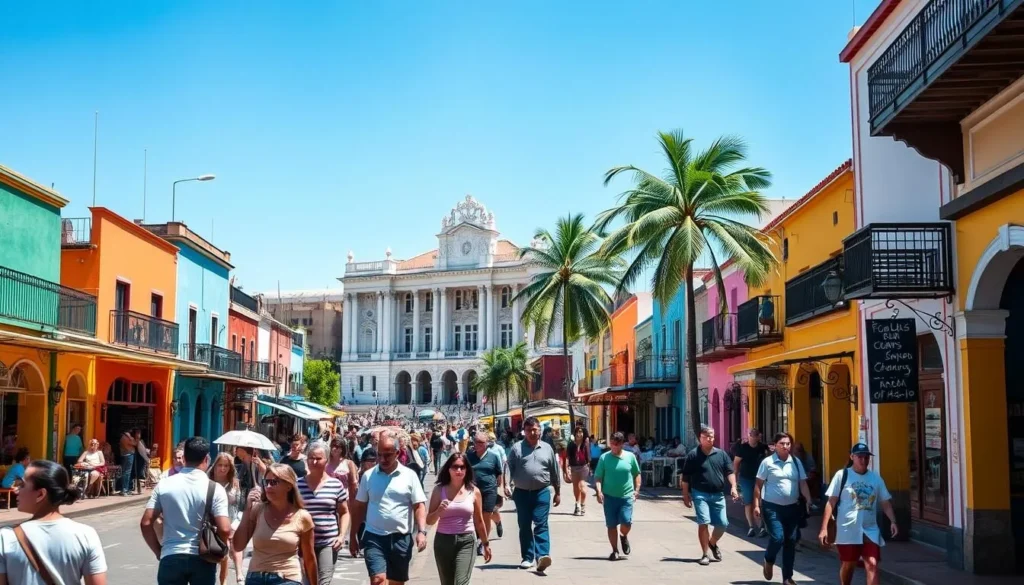
By following these practical tips, you’ll be well-prepared to explore São Luís and make the most of your visit. Whether you’re interested in history, culture, or natural beauty, São Luís has something to offer, and with the right planning, you can have a truly unforgettable experience.
Conclusion
As you conclude your journey through Grande São Luís, it’s clear that this city is a treasure trove of history, culture, and natural beauty. São Luís, a UNESCO World Heritage site, offers an authentic Brazilian experience that is both unique and captivating. The city’s historic center is a testament to its rich heritage, with colonial architecture and tiled facades that transport you to a bygone era.
The city’s museums, such as the Museu Histórico e Artístico do Maranhão, preserve the local heritage, while its cultural spaces showcase the artistic spirit of the region. Whether you’re exploring the cobblestone streets or visiting the iconic churches, São Luís is a city that will captivate your senses and leave a lasting impression.
Beyond the city, day trips to Alcântara, Lençóis Maranhenses National Park, and boat tours on the Parnaíba River Delta offer a glimpse into the region’s natural beauty and diverse wildlife. At night, the city’s vibrant nightlife and music scene earn it the title of “Reggae Capital of Brazil,” making it a destination that has something for everyone.
With practical information on the best time to visit, getting around, and safety tips, you’re well-equipped to plan your trip to Grande São Luís. Whether you’re a history buff, nature lover, foodie, or music enthusiast, this city offers a unique and memorable experience that will leave you with great memories and a desire to return.
In conclusion, São Luís is a city that embodies the spirit of Brazil, with its rich culture, history, and natural beauty. It’s a destination that deserves a place on your Brazilian itinerary, offering a truly authentic and unforgettable experience.
—
The above is subject to change.
Check back often to TRAVEL.COM for the latest travel tips and deals.
